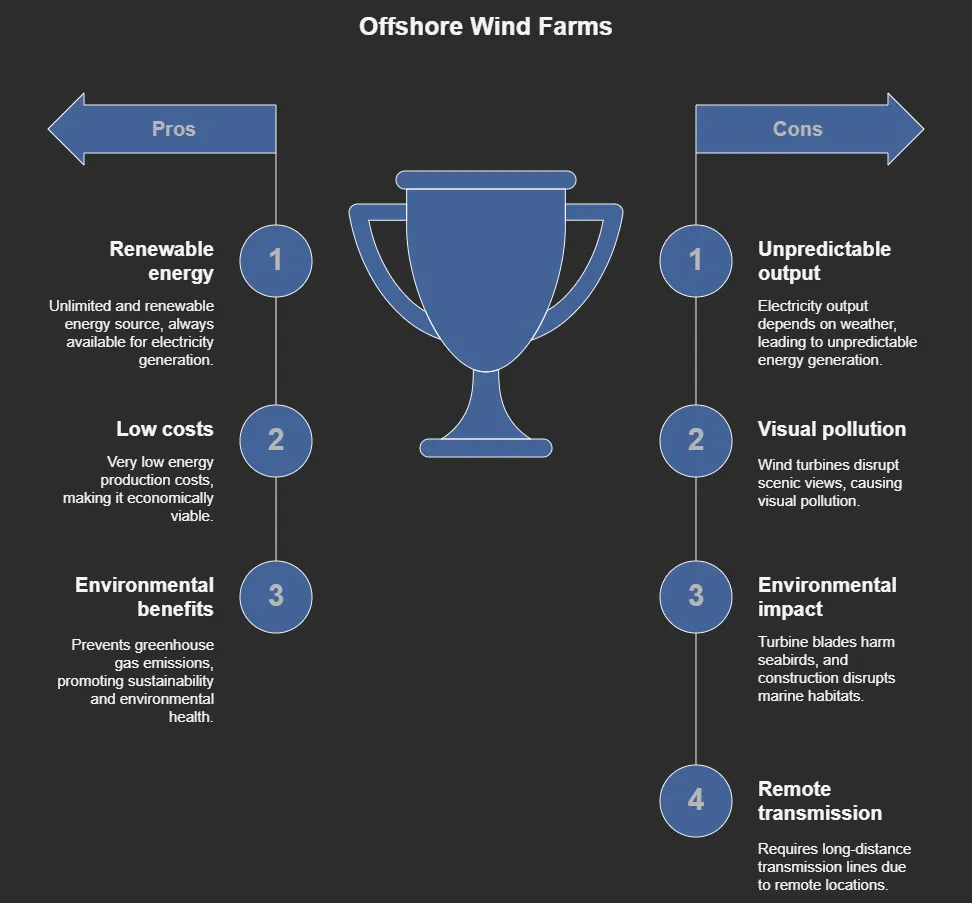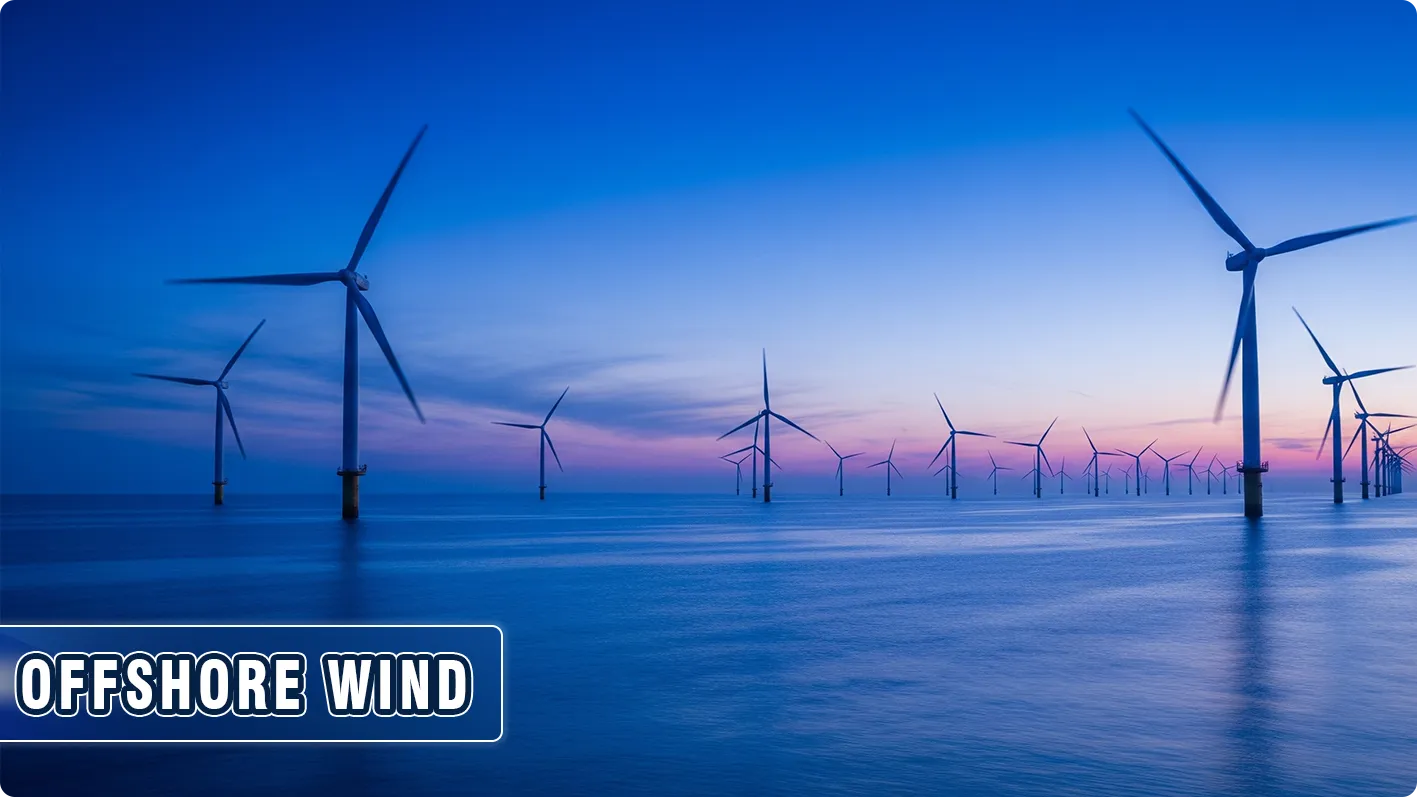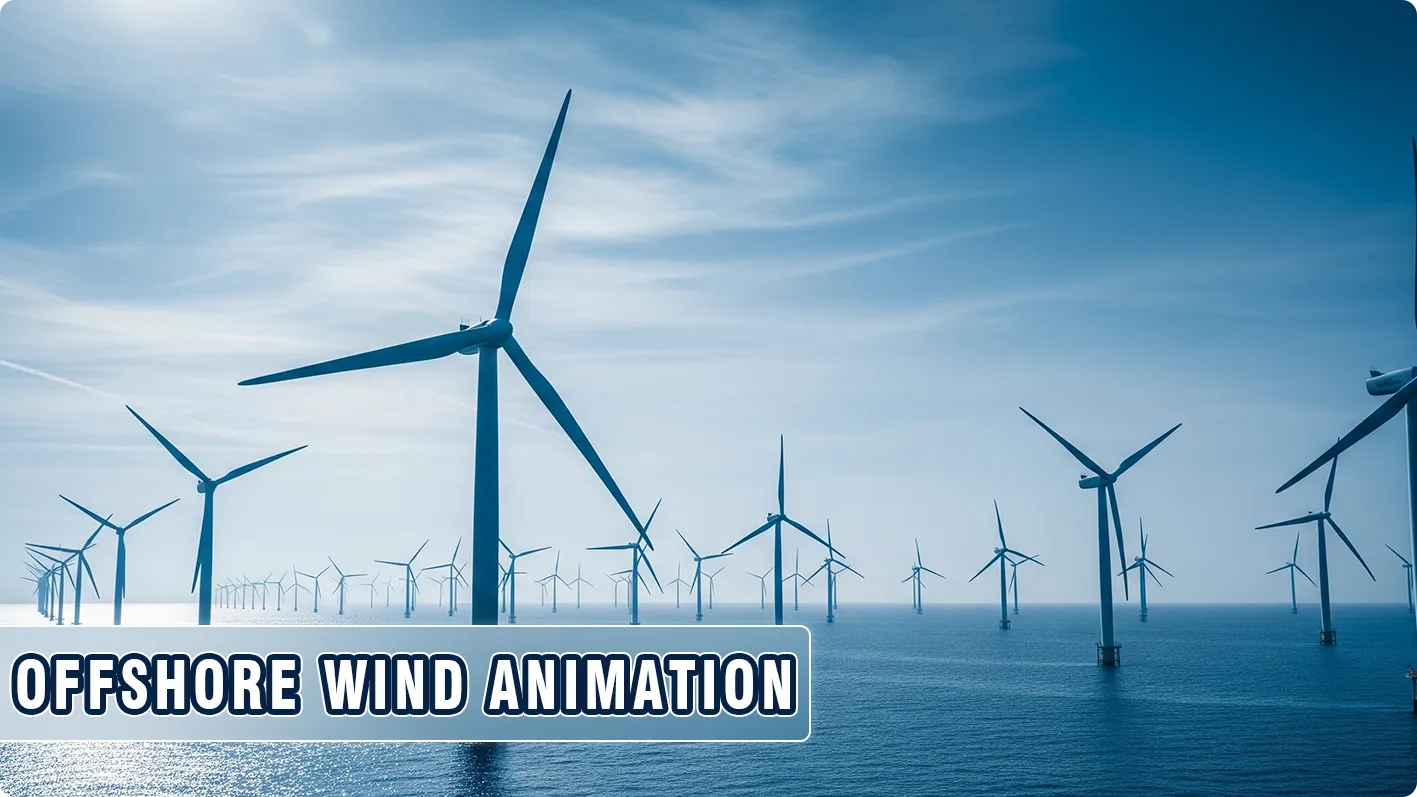Offshore wind farm animation is one of the most important types of animation that depicts the process of generating energy from this renewable energy animation source in a dynamic and attractive way. Offshore wind farms are of great importance in today’s world and use the power of strong and continuous ocean winds to generate clean electricity. In many developed countries, this clean energy has replaced fossil fuels due to its environmental protection and lack of carbon production. Offshore wind farm animations play an important role in visualizing this technology and help stakeholders, policymakers and the general public to become fully familiar with this specialized and complex process.
Offshore Wind Farms
Wind farms, also known as wind farms, generate electricity by placing a large number of wind turbines animation close together. Offshore wind farms are clusters of wind turbines installed in coastal waters, usually coastal seas, lakes or fjords, where wind speeds are higher and more consistent than on land. These farms generate electricity by converting the kinetic energy of the wind into electricity, which is then transmitted to shore via undersea cables. Unlike onshore wind farms, offshore farms have fewer restrictions, allowing for the installation of larger turbines and the production of more energy. The technology has gained much attention in countries such as China, the United Kingdom and Germany.
Offshore Wind Farm Animation and Its Role
Animations are a set of 2D and 3D images that serve as a powerful tool for communicating the complex processes of offshore wind farm development, operation and environmental integration, and they present these complex concepts in an engaging way. These animations are created for a variety of purposes, from educational outreach to project planning and marketing, making them essential for stakeholders in the renewable energy sector animation.

The need for offshore wind farm animations
- 1. Simplifying complex processes: Offshore wind farms have a complex and technical structure, including turbine installation, undersea cabling and grid integration, which require specialist knowledge to understand. Animations simplify these concepts for non-technical audiences and show how turbines work and are placed, how electricity is transmitted and how farms operate in marine environments, and how electricity is transmitted to shore.
- 2. Public engagement and participation: High-quality animations, such as those produced for an offshore wind farm, capture the public’s attention and gain support by showcasing clean energy and its environmental impacts and addressing concerns about environmental impacts.
- 3. Presentation to investors and stakeholders: Animations are used to present projects to investors, demonstrating the scale and feasibility of developments such as a floating wind turbine project, and they engage with greater confidence by visualizing the project. .
- 4. Environmental awareness: Animations can further demonstrate efforts to minimize environmental impacts, such as designing turbine bases as artificial reefs to support marine life.

How do offshore wind farms work?
To create an offshore wind farm animation, developers and project experts must gain a thorough understanding of the mechanics of offshore wind farms. The process involves several steps, from site selection to power transmission, which experts must go into in detail.
- 1. Site selection and environmental assessment: Before starting the project and construction, developers conduct extensive studies to identify suitable locations. They assess wind resources using satellites and identify sites that meet minimum standards. They then assess environmental impacts and assess the effects on marine ecosystems, including fish, seabirds and mammals. They then evaluate projects in terms of construction costs, energy output and revenue potential, and assess their economic feasibility.
- 2. Turbine design and installation: Offshore turbines are marvels of engineering designed to withstand harsh marine conditions. These turbines are used with fixed foundations in shallow waters and are attached to the seabed with monopile or jacket foundations. For deeper waters, floating platforms are attached to the seabed, then the installation process takes place and piling secures the foundations, while specialized vessels install the turbines and blades.
- Power transmission: The electricity generated by the turbines is collected at offshore substations and transmitted to onshore power plants via special cables.
- Operation and Maintenance: Offshore wind farms require ongoing maintenance to ensure efficiency. Remote monitoring, drones, and CCTV cameras are used to address security concerns.
Advantages and Disadvantages of Offshore Wind Farms
Wind farms are a renewable and sustainable energy source that uses wind energy to generate electricity. These power plants have advantages that we will discuss below.
- Offshore wind farms are unlimited and renewable resources and are always available. These resources do not produce greenhouse gases and help preserve the environment.
- Wind farms are energy production sources that have very low energy production costs and these turbines can be installed even in remote locations.
- Wind farms prevent the process of producing greenhouse gases and help maintain sustainability and a healthy environment.
In addition to the advantages, offshore wind farms also have disadvantages, as follows:
- The amount of electricity generated from wind turbines depends on the weather. So it is unpredictable to accurately predict the amount of electricity generated. For example, if the wind speed is low one day, the turbine will not spin and electricity will not always be available. To use this energy continuously, we must use storage technology.
- Creating noise and visual pollution is also one of the biggest disadvantages of wind energy, as wind turbines can be noisy when operating due to their mechanical operation and the wind vortex created when the blades rotate. In addition, since wind turbines must be built high enough to capture a good amount of wind, the turbines can often disrupt scenic views such as mountain ranges, lakes, oceans, etc.
- Negative effects of wind turbines on the environment, the blades of a wind turbine are very large and rotate at high speeds, which causes damage to seabirds and kills them. The construction of wind farms can also disrupt the natural habitats of local species, which can be overcome by choosing the right location.
- The remoteness of wind farms from the centers of consumption and transmission of this energy over long distances is another disadvantage of those farms, which requires separate lines and infrastructure for transmission.
read more: Wind energy animation
Offshore wind farms are an important part of the comprehensive energy paradigm shift towards renewable energy and have huge potential to power millions of homes while reducing carbon emissions, which leads to environmental sustainability. Animations play an important role in simplifying this technology, engaging stakeholders and addressing environmental concerns. The future of clean energy is bright, and animations will continue to illuminate the path ahead. At Fidar Animation, we are with you on the path to brightening the future, utilizing a group of experienced and specialized people, and by creating high-quality animations of offshore farms, we simplify the understanding of these complex concepts for the target community. Contact us for more information and to place an order.
